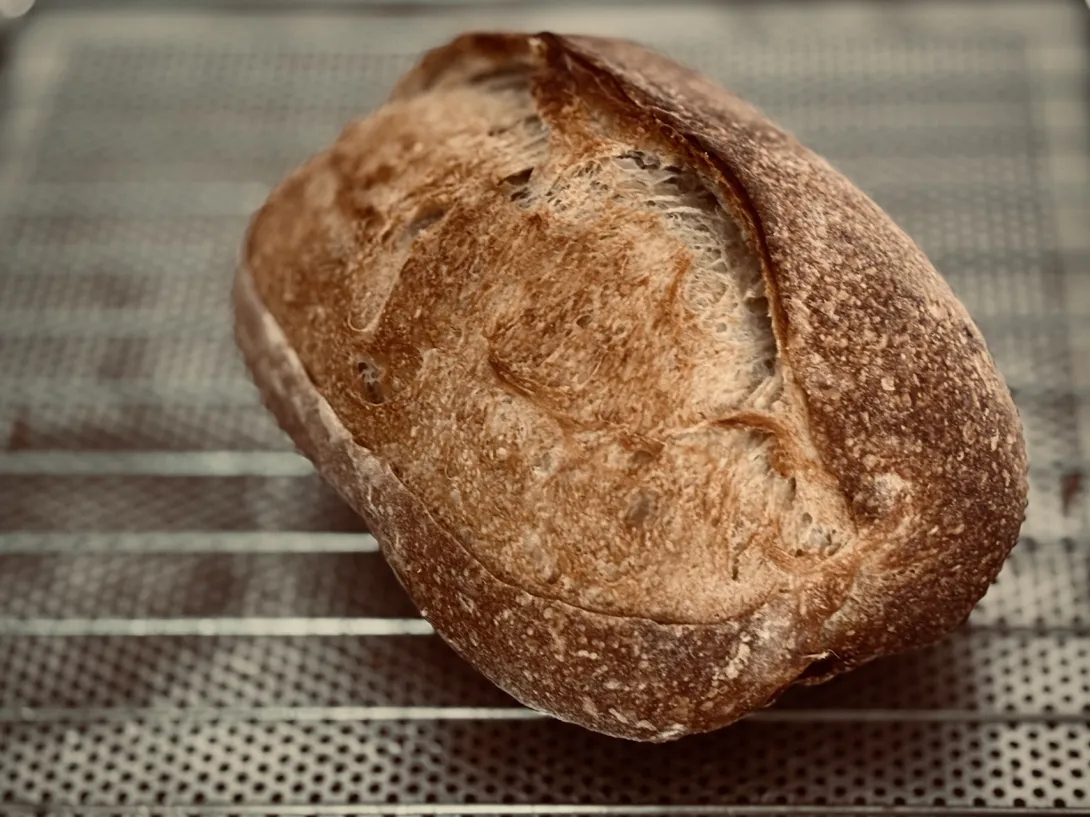
Second expriment with the flour from th esupermarket
Same: 5% whole wheat, 5% rye, 20% LM
Changes: 70% hydration, cold bulk fermentation (preferred method because I can control better the fermentation and the final proof)
- sparkfan's Blog
- Log in or register to post comments
Looks like you've found the right approach for this flour.
Paul
Very nice crumb!
Lovely bake! Glad you figured out a way to make the flour worked
For me, pain de campagne is a reminder how simple is always better. And never cease to amaze me how 5-10% of rye can make noticeable difference in flavor, especially made with low-acidity style fermentation schedule
Jay
Re low acidity: sometimes I add salt (2%) already to the preferment. Salt slows down the LABs more than the yeasts. The acidity in the final dough should be lower because the acidity in the preferment is lower. Just don't forget to subtract the amount of salt in preferment from the total amount of salt.
I've heard that the French refer to all breads that do not consist solely of white flour as pain de campagne ;)
If I don't bake a 100% (whole) rye loaf (as a counterbalance to my panettone experiments :D ) , I generally use a total of 15-45% of (whole) rye, sometimes combined with whole wheat, depending on mood, etc. With a new flour it's safer to start with a lower percentage.
I bought now a variation of the same flour with a tiny bit more ash, similar to the italian tipo 1 vs. tipo 0. Probably will give it a try next time.
I've read somewhere, historically the flour used for pain the campagne were from wheat harvested from fields that has around 10 percent rye growing in it, hence I stick to 10 percent rule whenever I make pain de campagne
I almost run out of my 14% protein flour, which I don't like for it being too white, and plan to try higher ash content flour as well, although with lower protein content by 1 percent
Great looking crumb. So tell me your procedure for your cold bulk. I used to do that way but switched my method to try and get more control. I was getting too many under proofed loaves.
Thanks,
Ian
I used cold bulk because I mixed the dough pretty late in the day. It was the only way to get some decent night sleep :D
Mix the dough, 2-3x stretch & fold (1-1.5h at 24C), continue cold bulk fermentation in the fridge (±6C) over night, next day take it out of the fridge and continue bulk fermentation at 24-25C + stretch & fold as needed. From here it's actually like a regular warm bulk fermentation + preshaping + shaping + warm final proof.
Cold final proof is imo a fire & forget method. It might work, it might not work. The poke test doesn't work on cold dough. The learning curve (when to shape and put the dough into the fridge, how is the temperature curve depending on the temperature of your bulk fermentation, weight of the dough and place in the fridge, etc) is much longer because you get feedback later. This is at least my opinion and experience. It is not necessarily valid for everybody.
I agree that a cold bulk ferment is a good tool to make the bread fit your schedule. It can also bring out more flavor. I usually put the dough into the refrigerator about an hour before I think it will be fermented as far as I plan. The time will depend on the size of the dough since a larger mass takes longer to cool down in the middle than an smaller mass. The dough will continue to ferment for another hour or so, and then a little more overnight.
I don't usually let the dough fully warm up before scaling/shaping, normally just about an half an hour, or an hour if I think it hasn't quite fermented enough. And of course, like @sparkfan, you can let it warm up and ferment even longer if you want. The dough will be happy either way. You can shape and proof before that but then it's going to want to proof longer.
TomP
Agree
Adapt the duration of the bulk fermentation when you take it out of the fridge to your dough and recipe. Cannot remember how long it was in my case and how warm the dough was at the end.